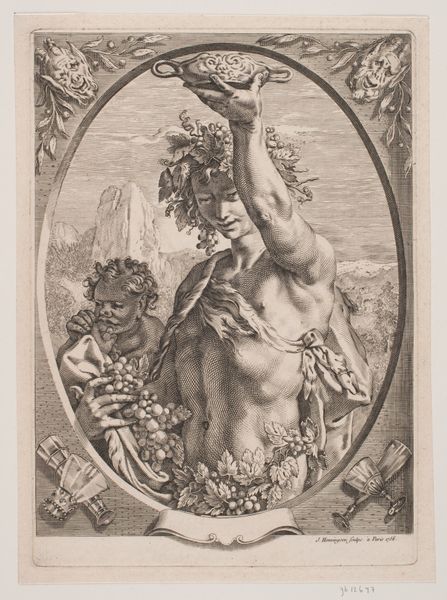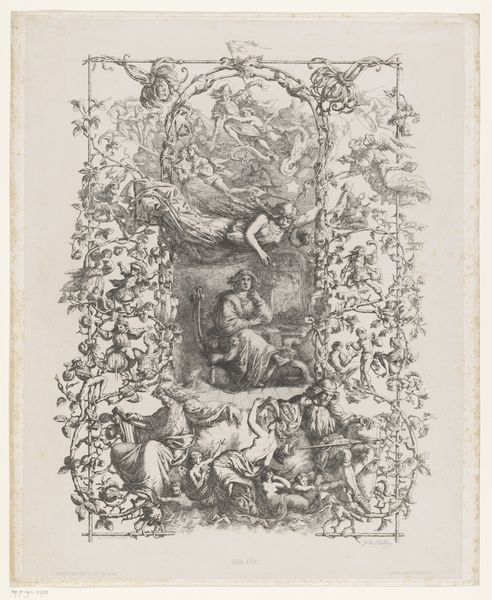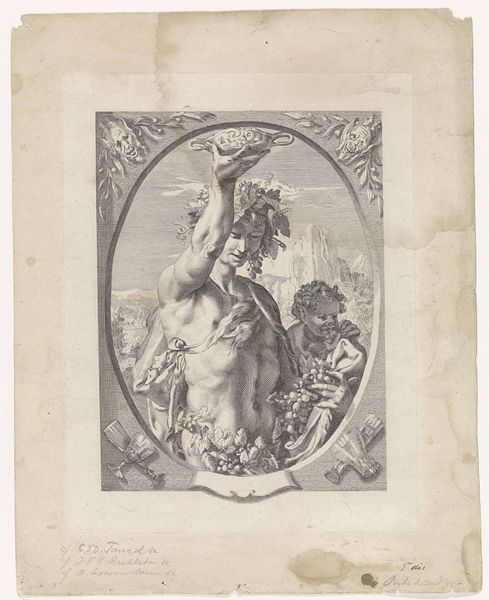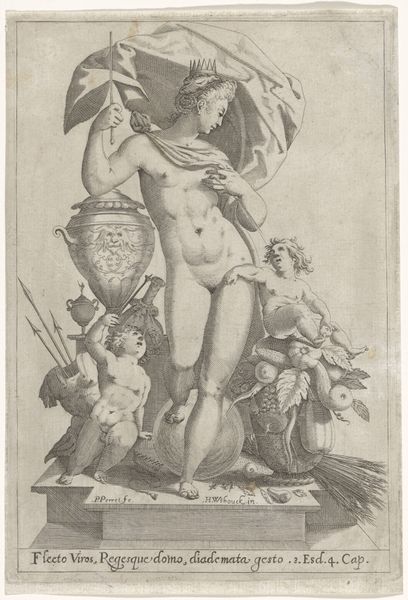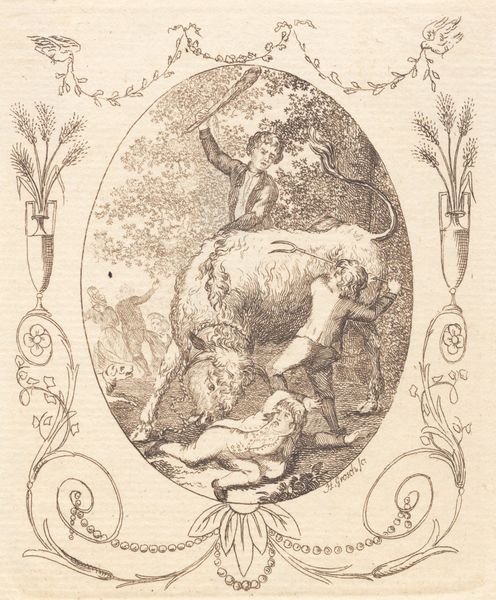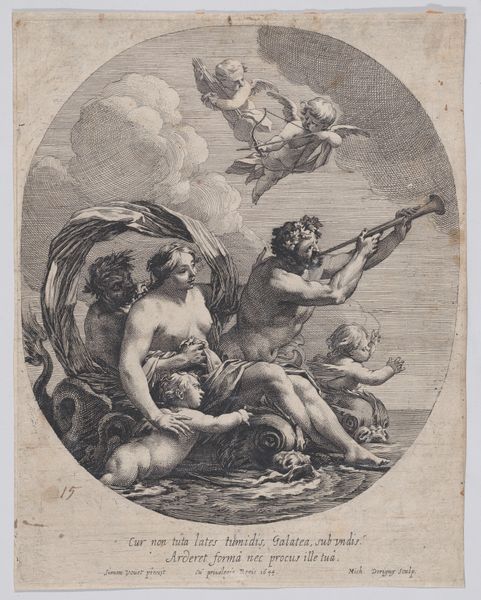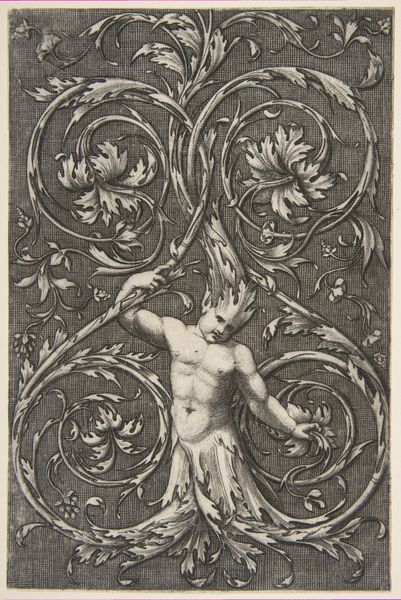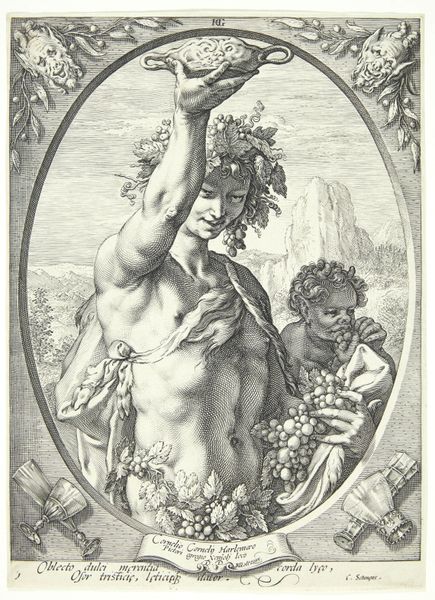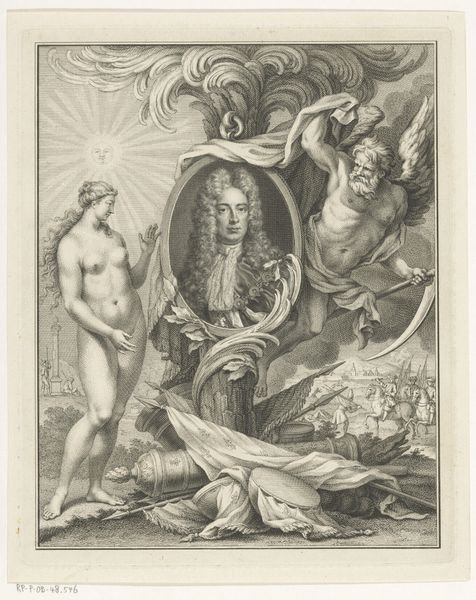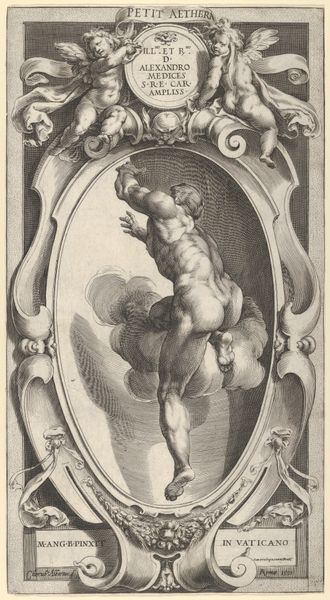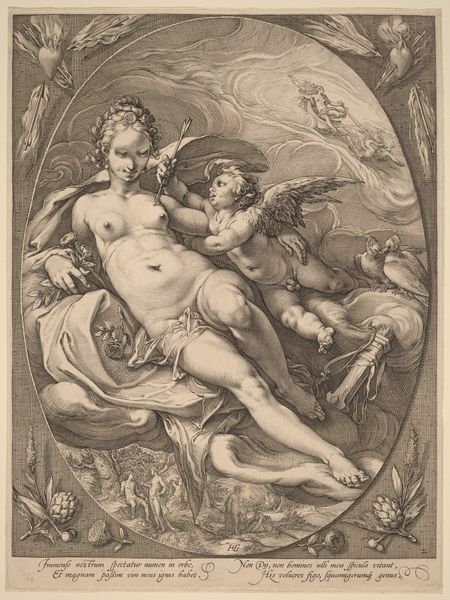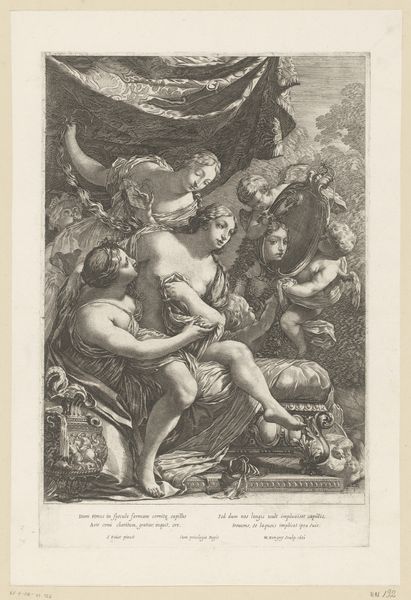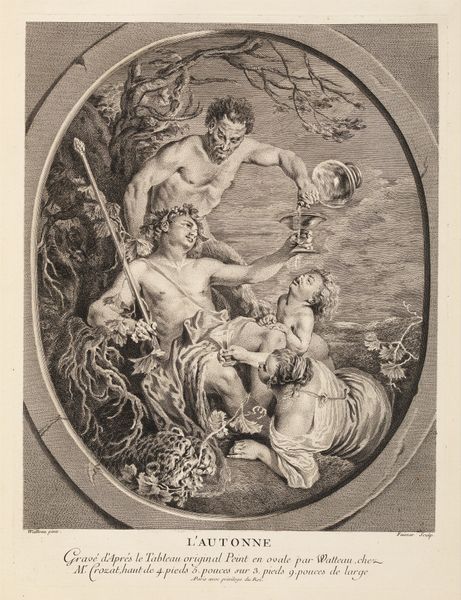
Dimensions: height 426 mm, width 185 mm
Copyright: Rijks Museum: Open Domain
Curator: This is "Bacchus," an engraving by Johann Gottlieb Baerenstecher, created in 1788. Editor: The image is overwhelmingly opulent, wouldn't you say? Even chaotic, despite being an engraving. Curator: I think that sense of overwhelming abundance speaks to the nature of Bacchus, also known as Dionysus, the god of wine, fertility, and theatre. This depiction is teeming with symbols related to Bacchanalian rituals. Editor: So what are some of the signifiers at play? Are we just dealing with "grapes equal wine" kind of thinking? Curator: Certainly not "just." Observe how Baerenstecher uses the god's figure. The tilt of his head, that raised goblet—all visual cues related to excess. The ivy crown reinforces his connection to nature and abandon, a far cry from measured Classicism. Even the cherubic figure alongside Bacchus hints at an untamed spirit of youthful indulgence. Editor: I notice the framing; grotesque masks peering from the corners. The imagery isn't sanitized. It's…raw, especially when contextualized within its time. One wonders about the intended audience, the kind of social critique or commentary—if any—it might be making. Curator: Those grotesque masks underscore the dual nature of Bacchus himself. The theatrical aspect, and the duality between ecstasy and madness that such freedom from restraint could induce. Remember, the Baroque revels in this complexity. Editor: Yet engravings in the late 18th century often circulated amongst the educated elite. So what purpose does representing "untamed nature" serve within that context? Curator: Perhaps it functioned as a contained rebellion. To acknowledge the human need for Dionysian release while remaining safely within the bounds of societal expectation? To acknowledge the importance of rituals, a collective experience that predates the Age of Enlightenment and can, at the same time, defy its tenets? Editor: I like the suggestion of "contained rebellion". Now I am wondering if Bacchus represents something more than "debauchery." Looking again, maybe it embodies that perpetual tension of the individual against society. Curator: Ultimately, this artwork reveals our consistent, often paradoxical, need for freedom. We crave that space for chaos, be it ecstatic ritual or the drama that gives us the tools for self discovery. Editor: Perhaps Bacchus is still quite relevant in our current moment, inviting questions about excess, control, and liberation. A figure that contains many conversations about identity.
Comments
No comments
Be the first to comment and join the conversation on the ultimate creative platform.
